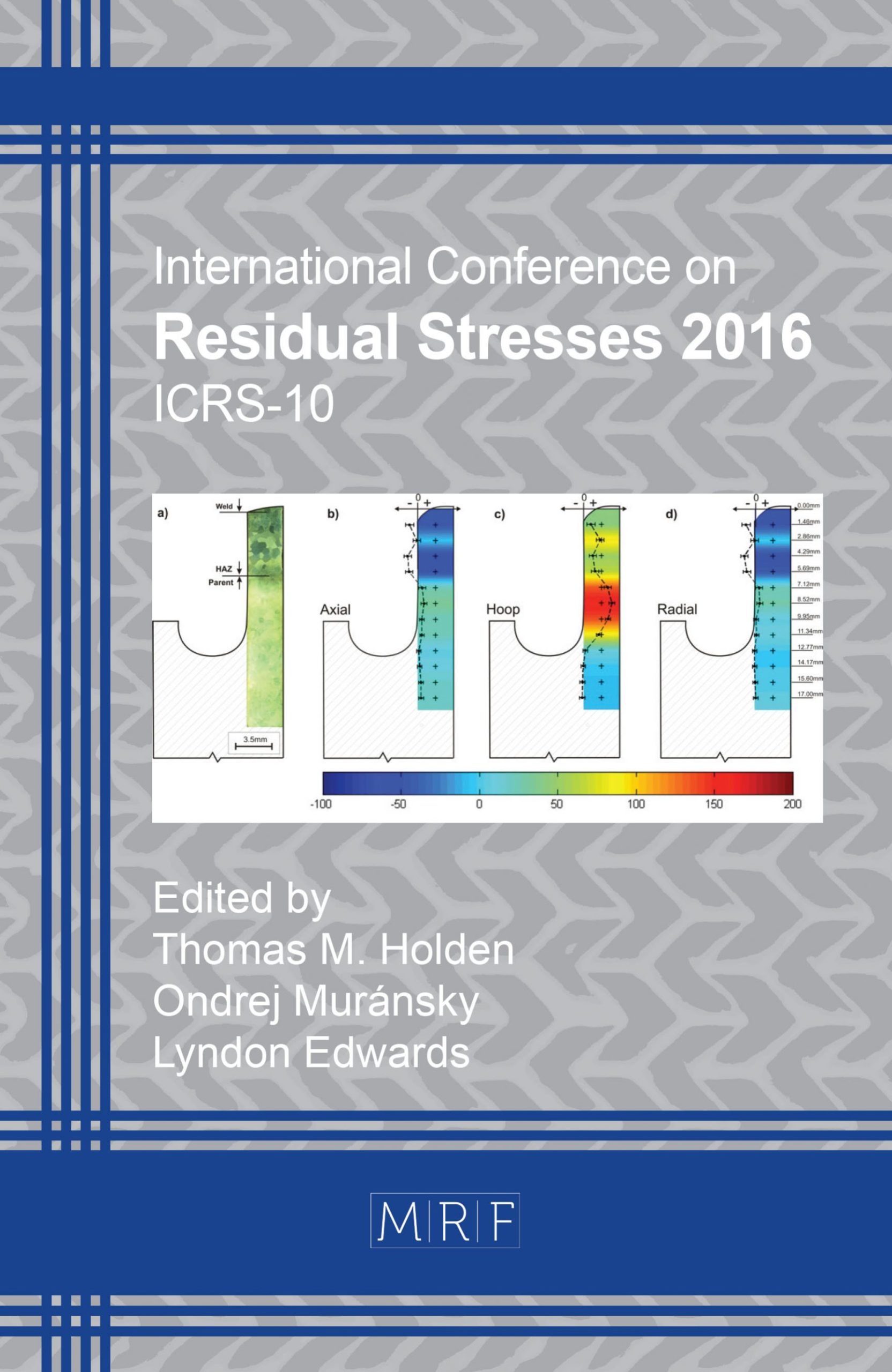The Residual Stress Effect on the Shape Memory Polymers
A. Kallel, M. Lamraoui, J. Fitoussi, A. Tcharkhtchi
download PDFAbstract. The current paper presents an experimental study of the residual stress role to recover polymer blend to its original position after deformation. In this study, we use a plymer blend of 40% PolyCaproLactone (PCL) and 60% Styrene-Butadiene-Styrene (SBS). The Shape Memory Polymer (SMP) is able to storing a permanent macroscopic after passing through a temporary one; then under an external stimulus; they can recover their initial shapes. The recovery rate depends on the mechanical property of the mixture and also of the number of the loading cycles. Indeed, one multiplying the number of mechanical loading cycle; generally tensile test; the recovery rate does not change in a linear manner and therefore the residual stress is not added in integer from one cycle to another. In this work we studied the mechanism of the shape as well as property memory effect of the blend under study during a shape memory cycle, to establish a relationship between the “shape memory effect” and the “properties memory effect”. Finally, we measure the “Driving Force” responsible for the shape memory effect by an original method. This study allows establishing a relationship between the rate of recovery and residual stresses introduced into the polymer during its deformation.
Keywords
Shape Memory Polymers, Residual Stress Effect, Driving Force, Blend PCL /SBS
Published online 12/22/2016, 6 pages
Copyright © 2016 by the author(s)
Published under license by Materials Research Forum LLC., Millersville PA, USA
Citation: A. Kallel, M. Lamraoui, J. Fitoussi, A. Tcharkhtchi, ‘The Residual Stress Effect on the Shape Memory Polymers’, Materials Research Proceedings, Vol. 2, pp 151-156, 2017
DOI: http://dx.doi.org/10.21741/9781945291173-26
The article was published as article 26 of the book Residual Stresses 2016
![]() Content from this work may be used under the terms of the Creative Commons Attribution 3.0 licence. Any further distribution of this work must maintain attribution to the author(s) and the title of the work, journal citation and DOI.
Content from this work may be used under the terms of the Creative Commons Attribution 3.0 licence. Any further distribution of this work must maintain attribution to the author(s) and the title of the work, journal citation and DOI.
References
[1] Lendlein A, Kelch S. Shape-memory polymers. Angew Chem Int Ed 2002;41:2034–57. http://dx.doi.org/10.1002/1521-3773(20020617)41:12<2034::AID-ANIE2034>3.0.CO;2-M
[2] Behl M, Lendlein A. Shape-memory polymers. Materials Today 2007;10:20–8. http://dx.doi.org/10.1016/S1369-7021(07)70047-0
[3] Leng J, Lu H, Liu Y, Du S. Conductive nanoparticles in electro activated shape memory polymer sensor and actuator. Paper presented at the proceedings of SPIE – the international society for optical engineering. Nanosensors and microsensors for bio-systems, San Diego, CA, United States, vol. 6931; 2008. p. 693109. http://dx.doi.org/10.1117/12.775743
[4] Tcharkhtchi A. and al, Some New Concepts of Shape Memory Effect of Polymers. Polymers 2014, 6, 1144-1163. http://dx.doi.org/10.3390/polym6041144
[5] Farzaneh, S., Fitoussi, J., Lucas, A., Bocquet, M., Tcharkhtchi, A., “Shape memory effect and properties memory effect of polyurethane”, Journal of Applied Polymer Science, Volume 128, Issue 5, pages 3240–3249, 2013. http://dx.doi.org/10.1002/app.38530
[6] S. Abdallah-Elhirtsi, J. Fitoussi, B. J. Rashmi, K. Prashantha, S. Farzaneh, M. F. Lacrampe, P. Krawczak, A.Tcharkhtchi, “Study of partial shape memory effect of polymers by multicycle tests”, , Polymer Composites, 36 (6), pp. 1145-1151 (2015). http://dx.doi.org/10.1002/pc.23472
[7] T. Tadaki and al. Shape Memory Alloys. Annual Review of Materials Science. Vol. 18: 25-45 (1988). http://dx.doi.org/10.1146/annurev.ms.18.080188.000325
[8] Lendlein A, Langer R. Biodegradable, elastic shape-memory polymers for potential biomedical applications. Science 2002;96:1673–6. http://dx.doi.org/10.1126/science.1066102
[9] Wache HM, Tartakowska DJ, Hentrich A, Wagner MH. Development of a polymer stent with shape memory effect as a drug delivery system. J Mat. Sci: Mater Med 2004;14:109-12. http://dx.doi.org/10.1023/A:1022007510352
[10] Hu JL, Ding XM, Tao XM. Shape memory polymers and their applications to smart textile products. J China Textile Univ 2002;19:89–93. Application textile
[11] Russel DA, Hayashi S, Yamada T. The potential use of memory film in clothing. Paper presented at the techtextil symposium-new protective textiles (through textile technology index database), April 1999. Application textile
[12] J. Karger-Kocsis. Recent advances in shape memory polymers and composites: a review. J Mater Sci (2008) 43:254–269. http://dx.doi.org/10.1007/s10853-007-2176-7
[13] T. Xie. Recent advances in polymer shape memory. Polymer 52 (2011) 4985-5000. http://dx.doi.org/10.1016/j.polymer.2011.08.003
[14] J. Hu. Recent advances in shape–memory polymers: Structure, mechanism, functionality, modeling and applications. Progress in Polymer Science 37 (2012) 1720– 1763. http://dx.doi.org/10.1016/j.progpolymsci.2012.06.001
[15] Lin JR, Chen LW. Study on shape-memory behavior of polyether-based polyurethanes. I. Influence of the hard-segment content. J Appl Polym Sci 1998;69:1563–74. http://dx.doi.org/10.1002/(SICI)1097-4628(19980822)69:8<1563::AID-APP11>3.0.CO;2-W
[16] Lin JR, Chen LW. Study on shape-memory behavior of polyether-based polyurethanes. II. Influence of soft-segment molecular weight. J Appl Polym Sci 1998;69:1575–86. http://dx.doi.org/10.1002/(SICI)1097-4628(19980822)69:8<1575::AID-APP12>3.0.CO;2-U
[17] NF ISO 6239:1986. Plastics Determination of Tensile Properties by Use of Small Specimens. Association Française de Normalisation (AFNOR): Seine-Saint-Denis, France, 1986.
[18] Zhang H., Wang H., Zhong W. and Du Q. A novel type of shape memory polymer blend and the shape memory mechanism. Polymer 50 (2009) 1596-1601. http://dx.doi.org/10.1016/j.polymer.2009.01.011
































